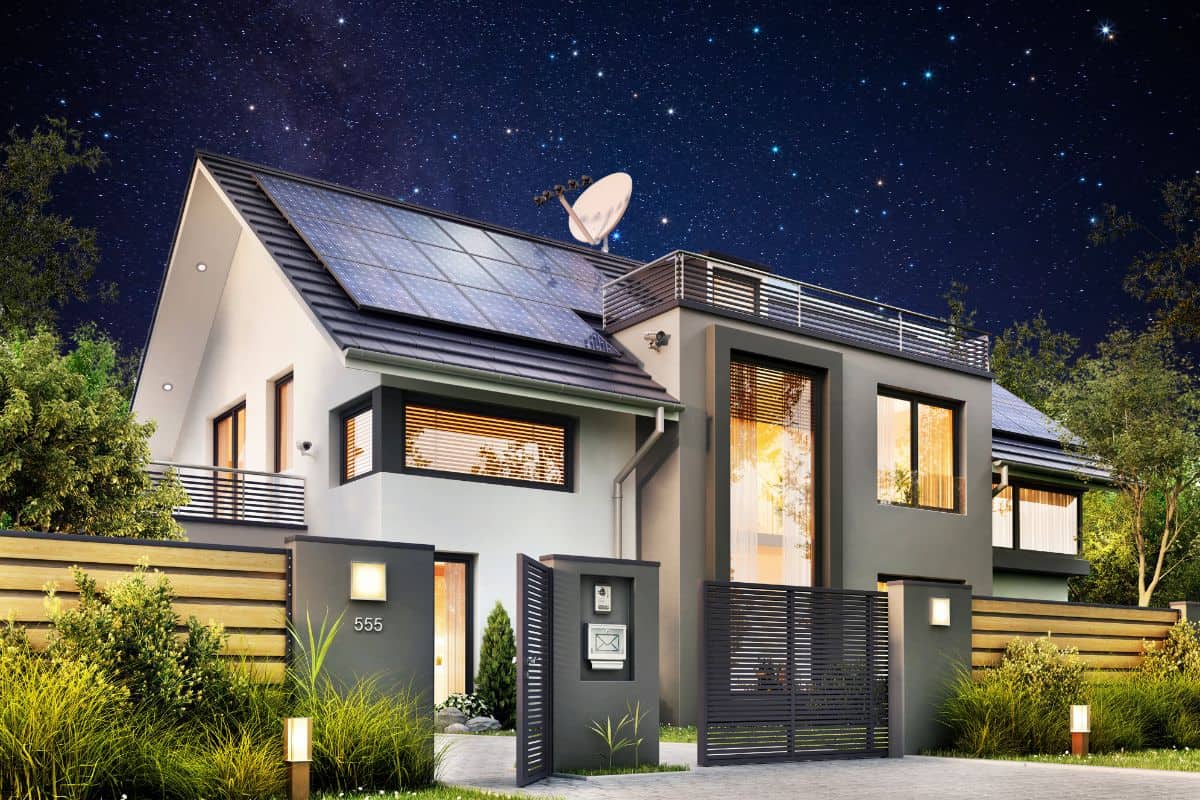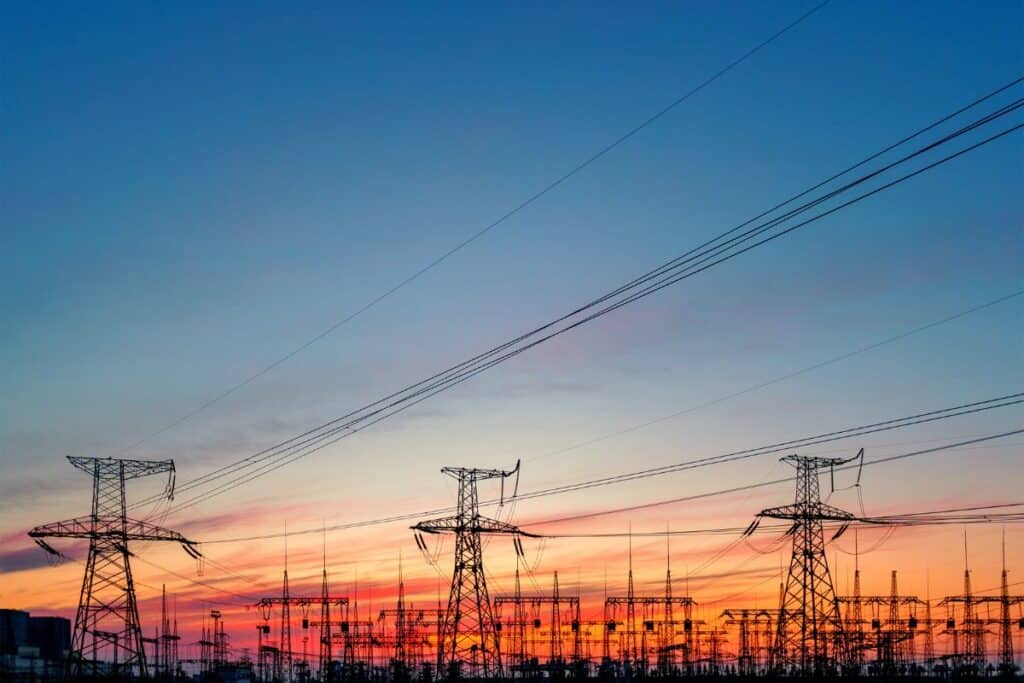Can solar panels really generate power when the sun is out of sight? That’s a question that often stirs up a debate among many. In this article, we’re going to dive into the fascinating world of solar panels and find out if they work during the night…
The short answer is: no, they don’t. Solar panels don’t work at night due to the absence of sunlight, which is the primary source they convert into electricity. The photovoltaic cells in solar panels need sunlight to trigger a reaction that generates an electric current. Therefore, when the sun goes down, solar panels go into a dormant state, ceasing power production until daylight returns.
Diving deeper into this, it’s important to understand how solar panels operate.

As mentioned, solar panels generate electricity through a process known as the photovoltaic effect. When sunlight hits the solar cells within the panel, it excites the electrons in these cells, causing them to move and create an electrical current.
Thus, without sunlight, this process comes to a halt, and the solar panels don’t generate electricity.
However, that doesn’t mean your house goes dark once the sun sets if you’re relying on solar energy. During the day, your solar panels likely generate more electricity than your home uses.
This excess power is sent back to the electrical grid, and in many places, you can earn credits for this through a system called net metering.
At night, when your panels aren’t producing power, you can draw on these credits to get electricity from the grid, essentially using it as a giant battery.
Furthermore, actual solar batteries are another option for nighttime power. If you have a solar battery, such as a Tesla Powerwall, it stores excess electricity generated during the day.
At night, your home can draw power from this battery, further reducing your reliance on the grid.
So you might be wondering whether moonlight can power solar panels.

Moonlight and Solar Panels: A Viable Power Source?
If solar panels harness energy from the sun, could they potentially generate electricity from moonlight?
Moonlight, unfortunately, doesn’t have enough intensity to generate meaningful electricity through solar panels. In theory, solar panels should be able to generate electricity from any light source. However, in practice, the intensity of the light matters a lot. That is why the moon isn’t a viable source of light.
As mentioned above solar panels rely on the photovoltaic effect to generate electricity, this relies heavily on the intensity of the incoming light. The sun, being a direct and incredibly intense light source, provides plenty of photons for this process.
Moonlight, on the other hand, is just reflected sunlight and is much weaker. This weakness translates to fewer photons hitting the solar panel, which means very little to no electricity generation.
Even on a night with a full moon, the intensity of the moonlight is only about 1/350,000th of the intensity of the sun.
This intensity is simply not enough to stimulate the photovoltaic effect in the solar cells, leading to negligible or zero power output.
While there’s a theoretical possibility that a very sensitive panel could generate a tiny amount of power under full moon conditions, the electricity generated would be too minimal to be of any practical use.
While the idea of harnessing moonlight for solar power may seem appealing, the reality is that it is simply not possible.
That then leads us to harnessing solar power for nighttime use…
Is Harnessing Solar Power at Night A Possibility?
Now that we’ve discovered that solar panels can’t generate electricity at night, does that mean you can’t use solar power after sunset?
It is possible to use solar power at night, although the approach differs significantly from how you would use it during daylight hours. The key lies in energy storage and the use of a grid-tied system.
Solar panels may not produce power in the dark, but any excess power they generate during the day can be stored for later use.
Solar battery storage systems are designed for this exact purpose. During the day, your solar panels might generate more electricity than your home needs.
Instead of allowing this excess power to go to waste, it’s stored in batteries for use when needed, such as during nighttime hours.
In a battery storage system, the energy stored during the day can power your home when the sun sets, effectively allowing you to use solar power at night.
These systems come in various sizes and capacities, allowing you to choose a system that best meets your energy consumption needs.
Another alternative is a grid-tied solar system, which works in conjunction with your local electricity grid.

When your panels produce excess energy during the day, that energy is fed back into the grid.
This usually results in energy credits from your utility company. At night, when your panels aren’t producing energy, you can use these credits to draw power from the grid.
This process is known as net metering, and it’s another effective way to ensure that your home has a consistent power supply round the clock.
It’s essential to note that both of these solutions require an initial investment beyond the cost of the solar panels themselves.
Battery storage systems, in particular, can be costly. However, they can provide significant savings in the long run and provide a reliable power source during both night and day.
Now that you know that there is a way to harness solar power at night, does temperature make difference?
Is Solar Power and Cold Nights A Compatible Duo?
Solar panels, contrary to popular belief, tend to work more efficiently in colder temperatures. It’s a common misconception that solar panels need heat to function. Instead, they rely on sunlight, not heat. In fact, the efficiency of solar panels can decrease as the temperature rises, making cold climates often ideal for solar power generation.
At night, even when it’s cold, if your solar system is equipped with a battery storage system, you can still utilize the solar energy generated during the day.
As mentioned above, the batteries store the excess energy produced during the sunny hours and use it when your panels aren’t generating power, like at night.
The cold temperature doesn’t affect the energy stored in these batteries. Modern solar batteries are designed to operate efficiently in a variety of weather conditions, including cold temperatures.
For those with grid-tied systems, the temperature at night is irrelevant. As previously discussed, you’ll be drawing power from the grid at night, using up the credits you’ve earned by feeding excess energy back into the grid during the day.
Moreover, while the amount of sunlight during winter days might be less than in the summer, this doesn’t mean that solar panels are ineffective in cold, snowy regions.
Snow can actually act as a reflector that amplifies sunlight, potentially leading to more solar energy generation.
It’s important to note, though, that while cold temperatures can boost solar panel efficiency, extreme weather conditions, like heavy snowfall, can obstruct the panels and limit energy production.
Regular maintenance, including clearing off snow after heavy storms, is crucial to ensure optimal function of your solar panels.
In conclusion, cold nights, or even cold climates in general, are not a hindrance to using solar power.
With the right storage or grid-tied system and regular maintenance, your solar power system can provide you with a steady, reliable source of energy all year round, regardless of temperature changes.
Let’s now look at the best storage solutions for using solar power at night…
Top Solutions for Storing Solar Power for Night Use
The ability to store solar power for use at night hinges on two main solutions: battery storage systems and grid-tied systems. Let’s dig deeper into how these systems work and why they are the best solutions available currently.
Battery storage systems, like Tesla’s Powerwall, have gained significant attention in recent years.
These batteries store excess solar energy produced during the day for use later on, such as at night or during power outages.
The energy stored in the batteries can be drawn upon when your solar panels aren’t generating electricity, ensuring a constant power supply to your home.
Modern solar batteries are compact, efficient, and increasingly affordable, making them a popular choice for many homeowners.
While the upfront cost of a solar battery can be substantial, the long-term savings can be quite significant, especially if you live in an area with high electricity rates or frequent power outages.
Furthermore, some regions offer incentives and rebates for installing battery storage systems, which can help offset the initial cost.
Another efficient solution for using solar power at night is a grid-tied solar system. This system works in conjunction with your local electricity grid.
During the day, when your solar panels are producing more energy than you need, the excess energy is fed back into the grid, earning you credits from your utility company through a process called net metering.
At night, when your solar panels aren’t producing power, you draw from the grid instead, using up the credits you’ve accumulated.
The beauty of a grid-tied system is that it allows you to take advantage of solar power without having to worry about storing the excess energy yourself.
Choosing between a battery storage system and a grid-tied system will depend on several factors, including your budget, energy needs, and local regulations.
It’s advisable to discuss your options with a reputable solar installation company to determine the best solution for your situation.
In conclusion, while solar panels may not produce energy at night, battery storage systems and grid-tied systems provide excellent solutions to ensure you have a consistent power supply around the clock.
By choosing the right solution, you can make the most out of your solar power system and significantly cut down your energy costs.
